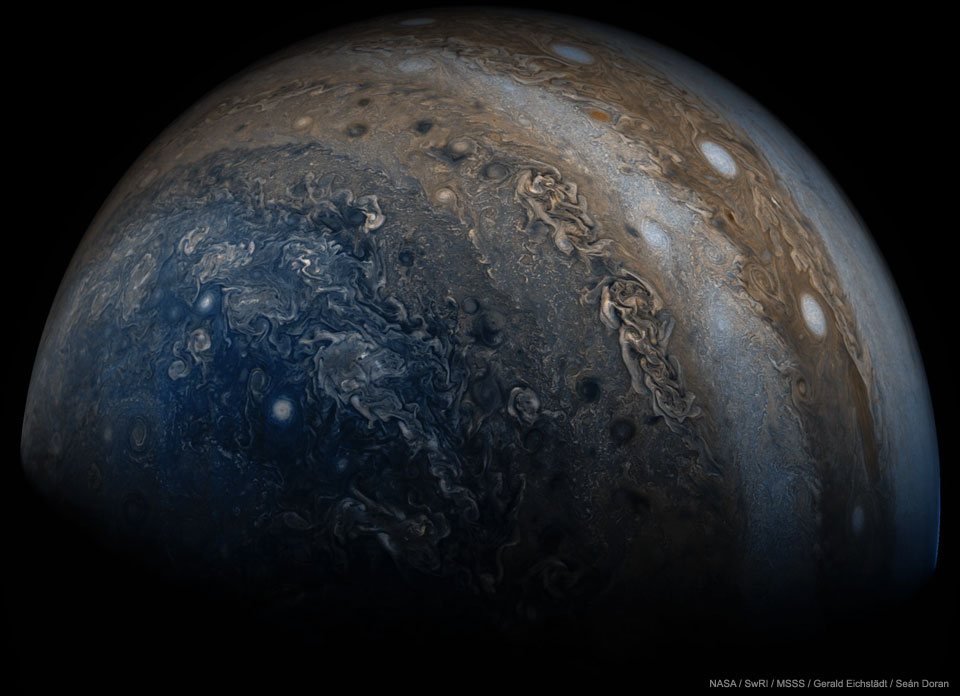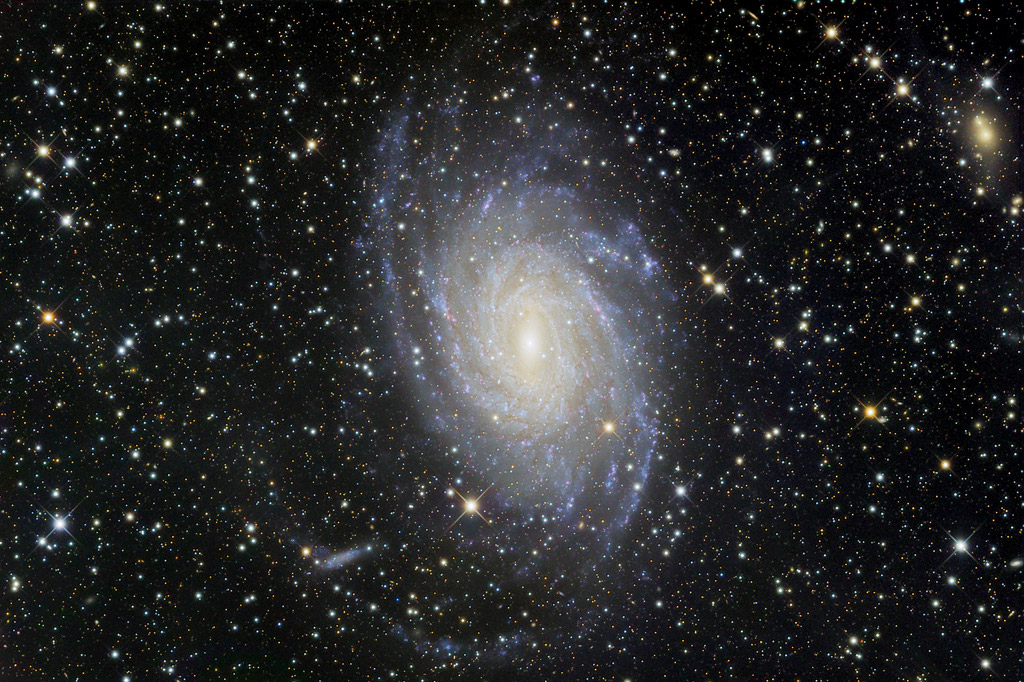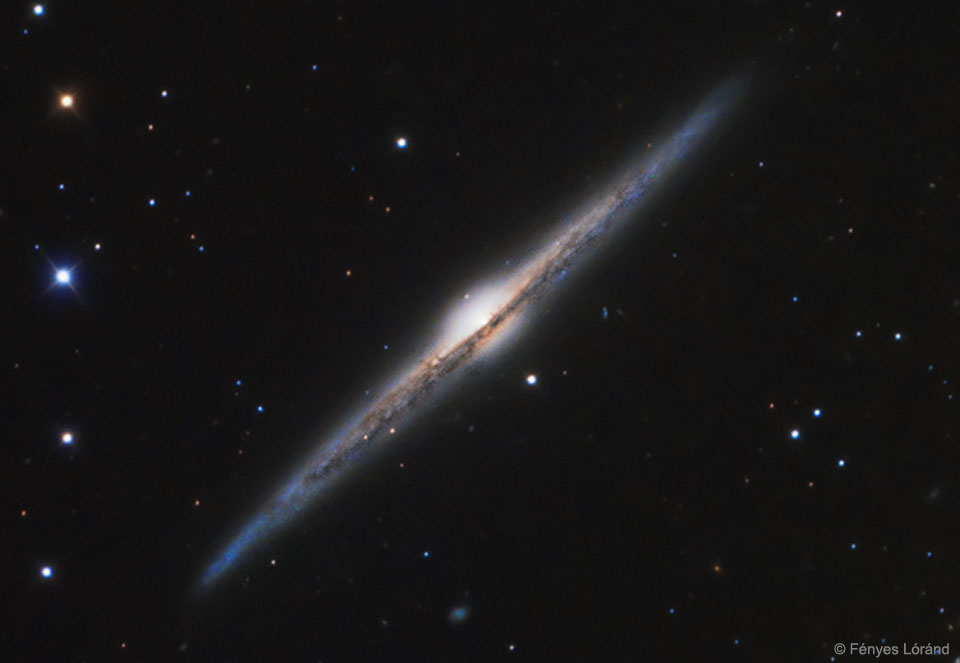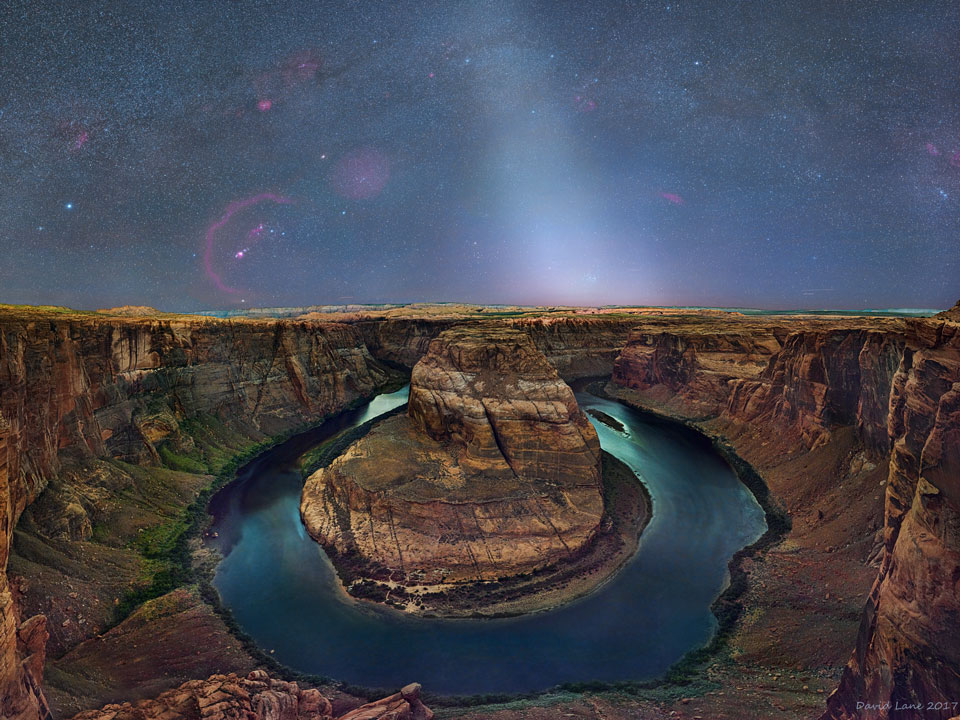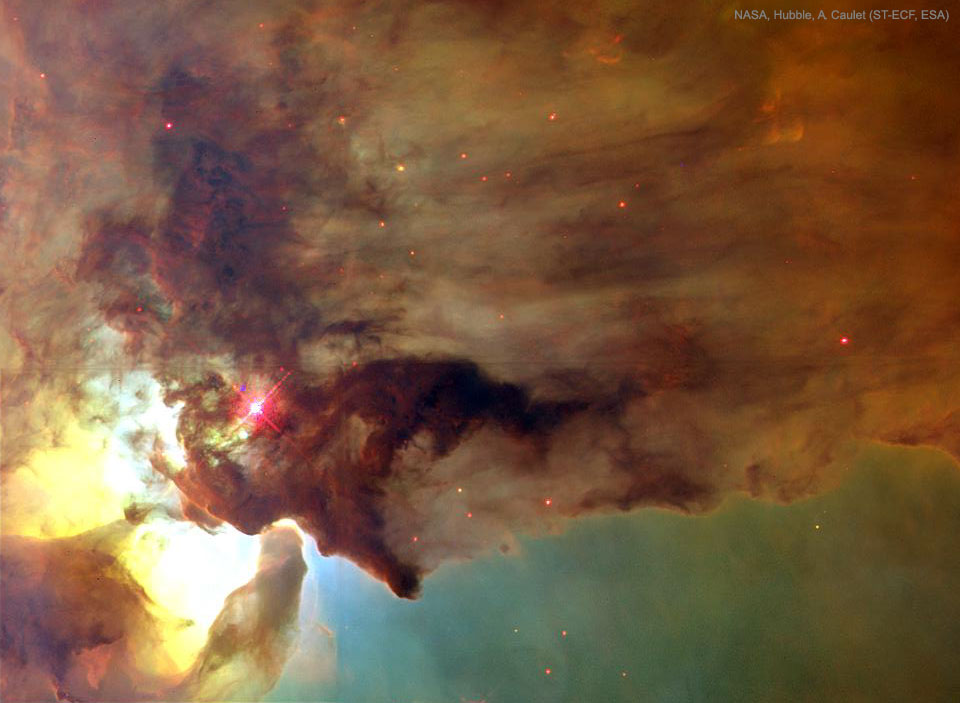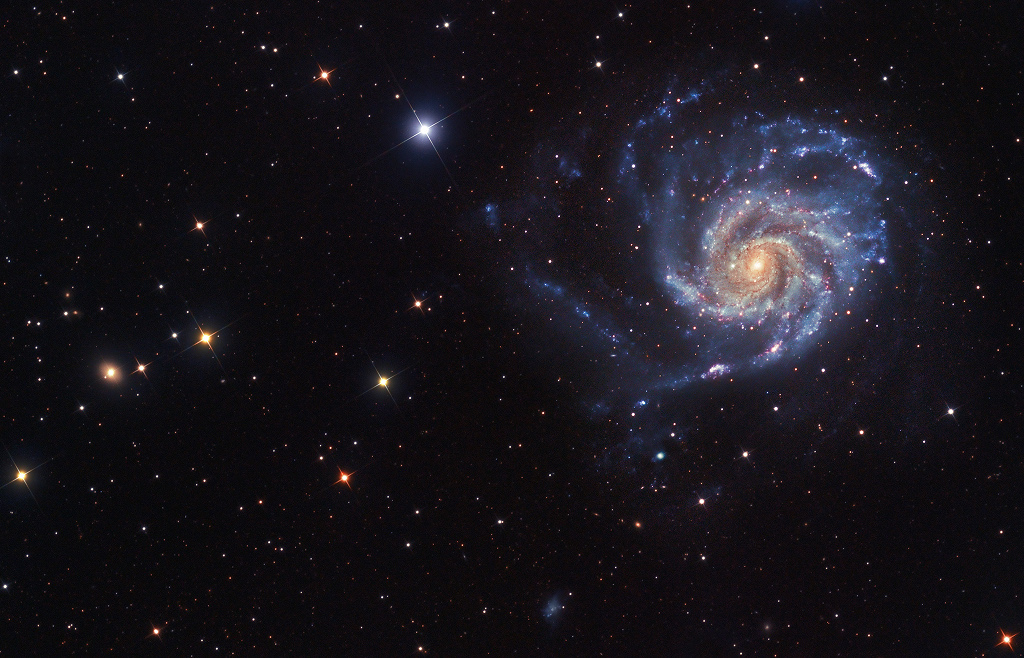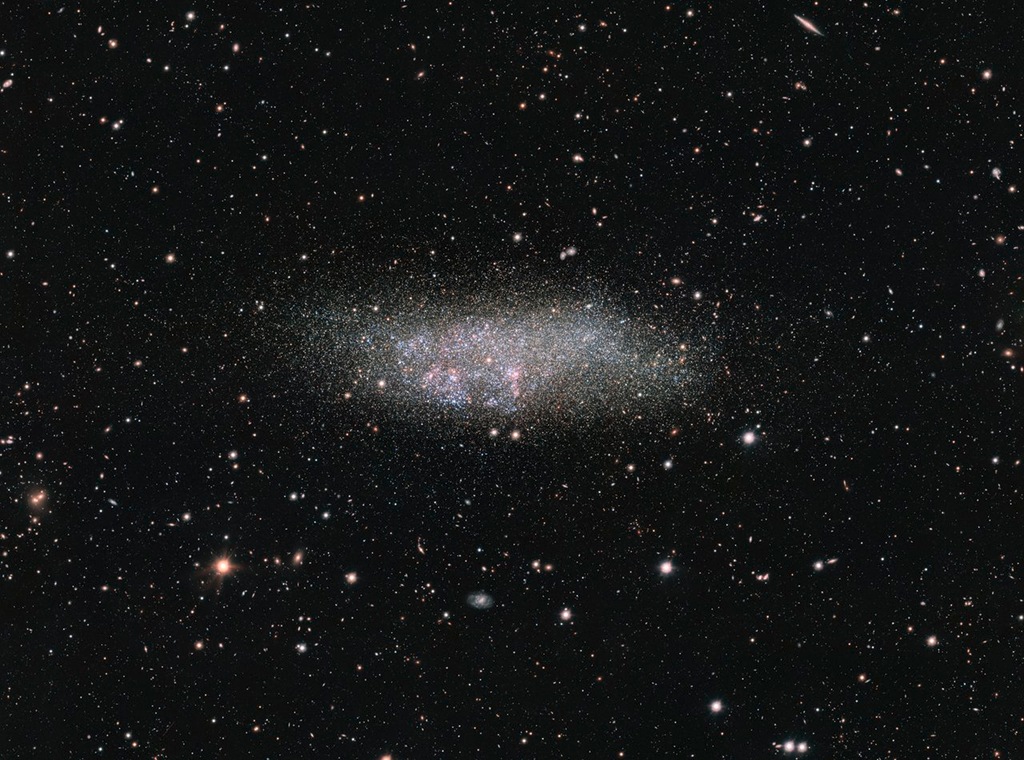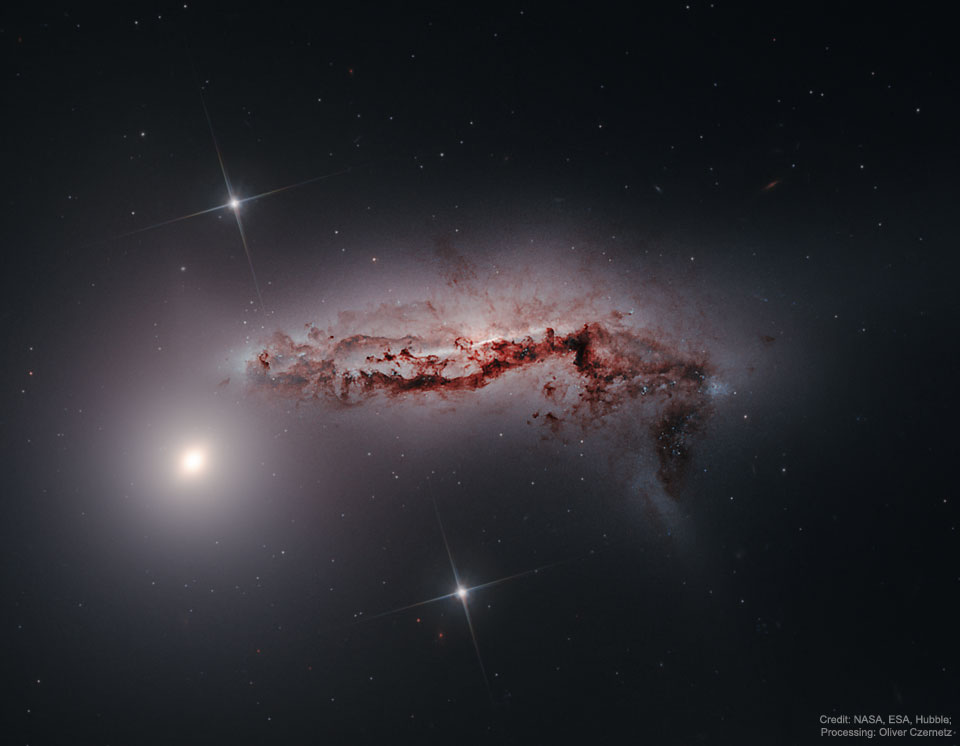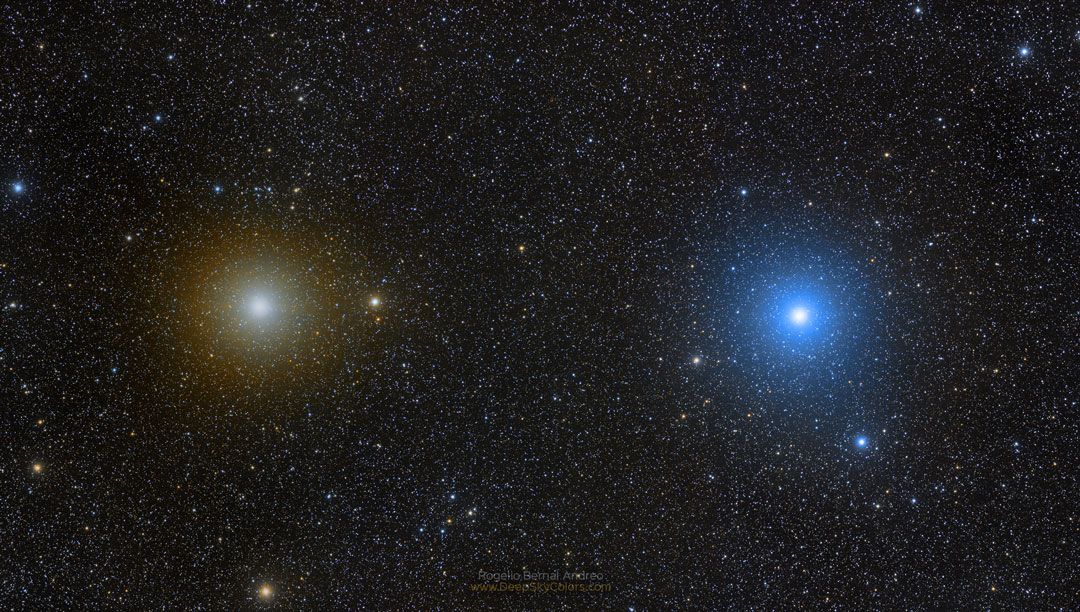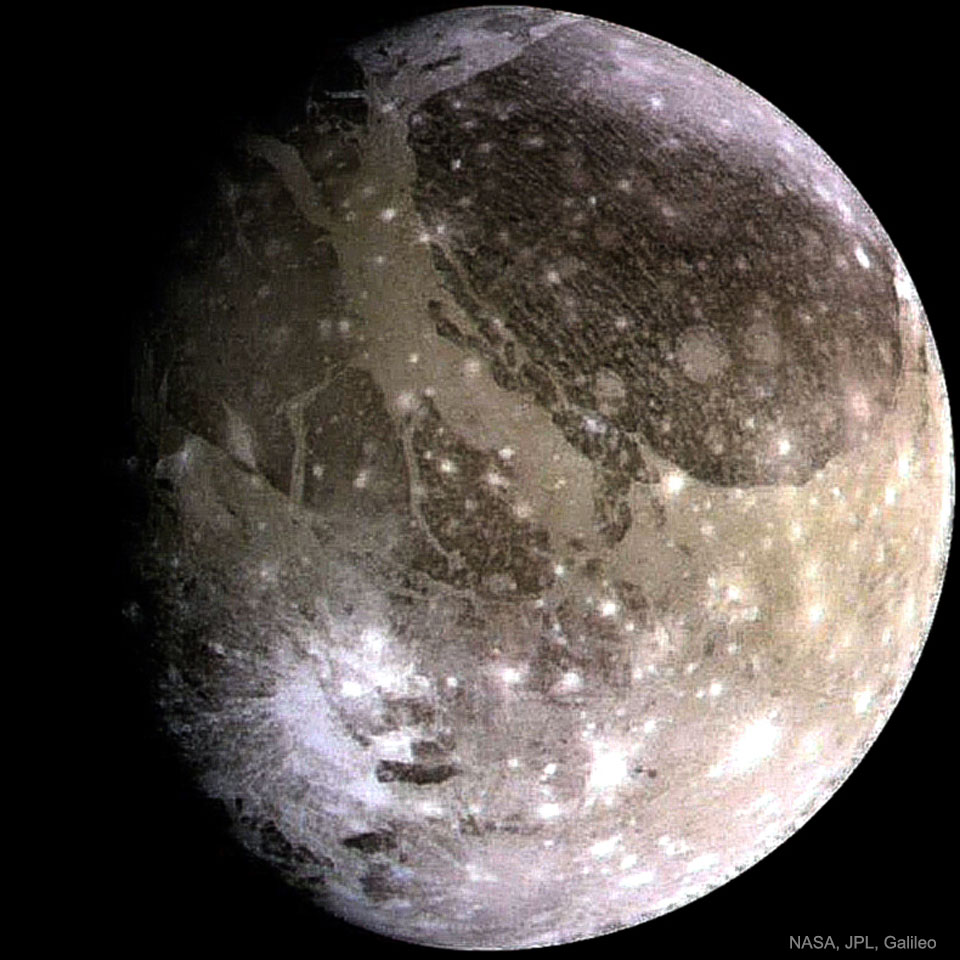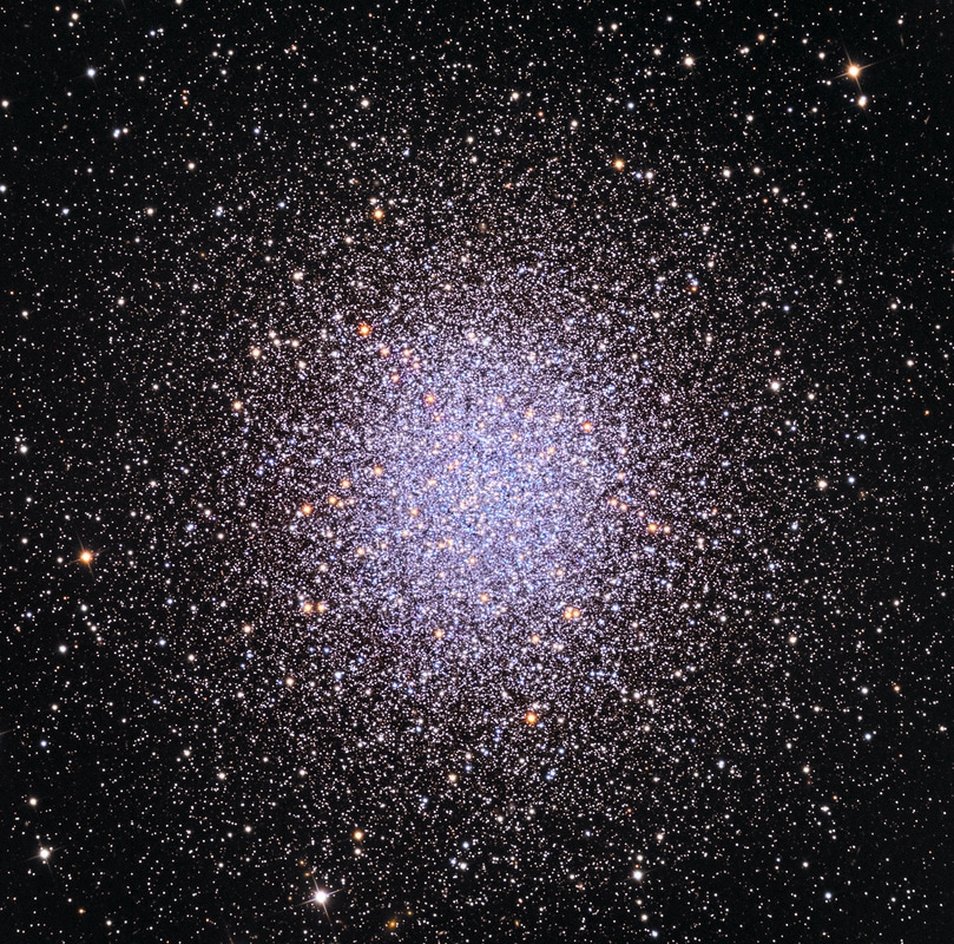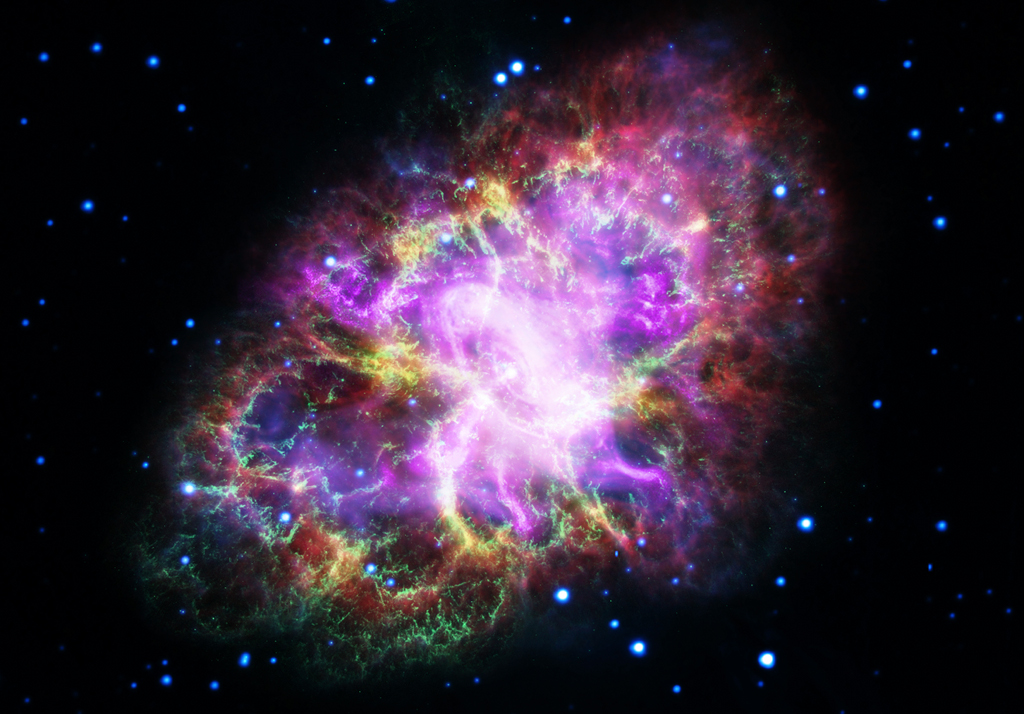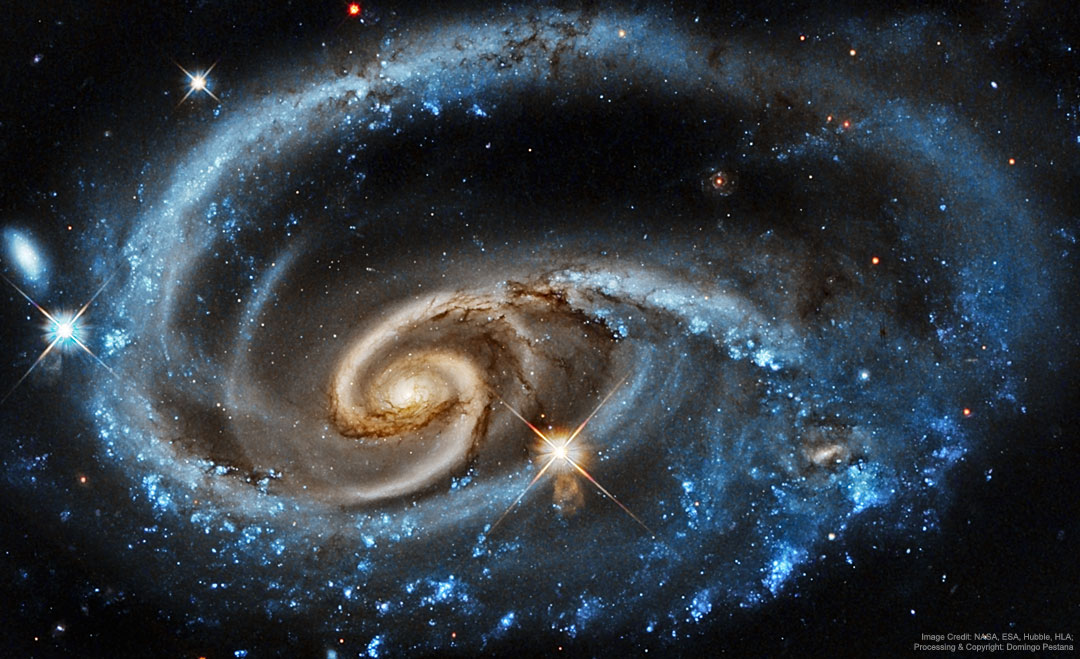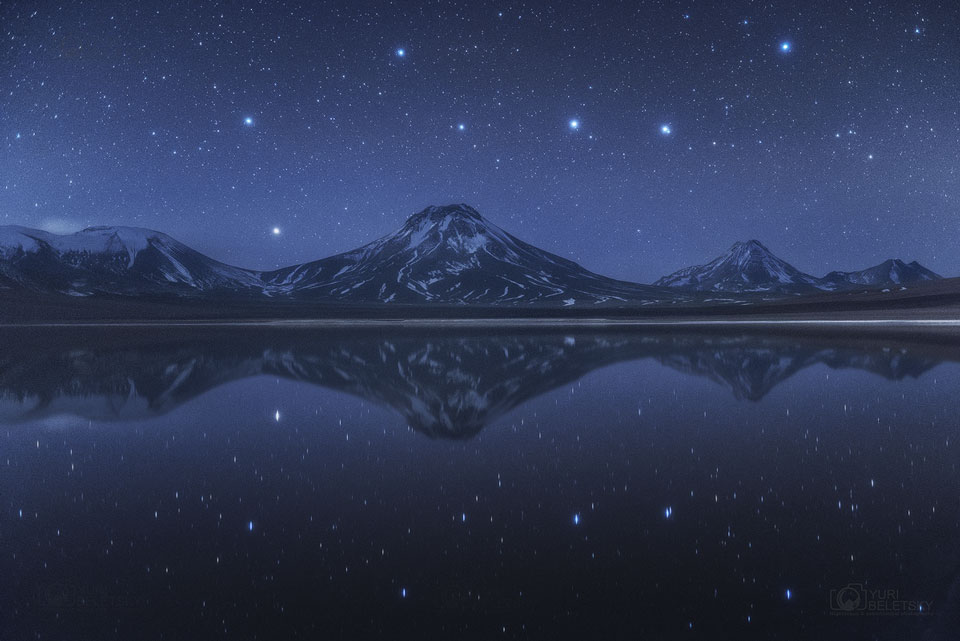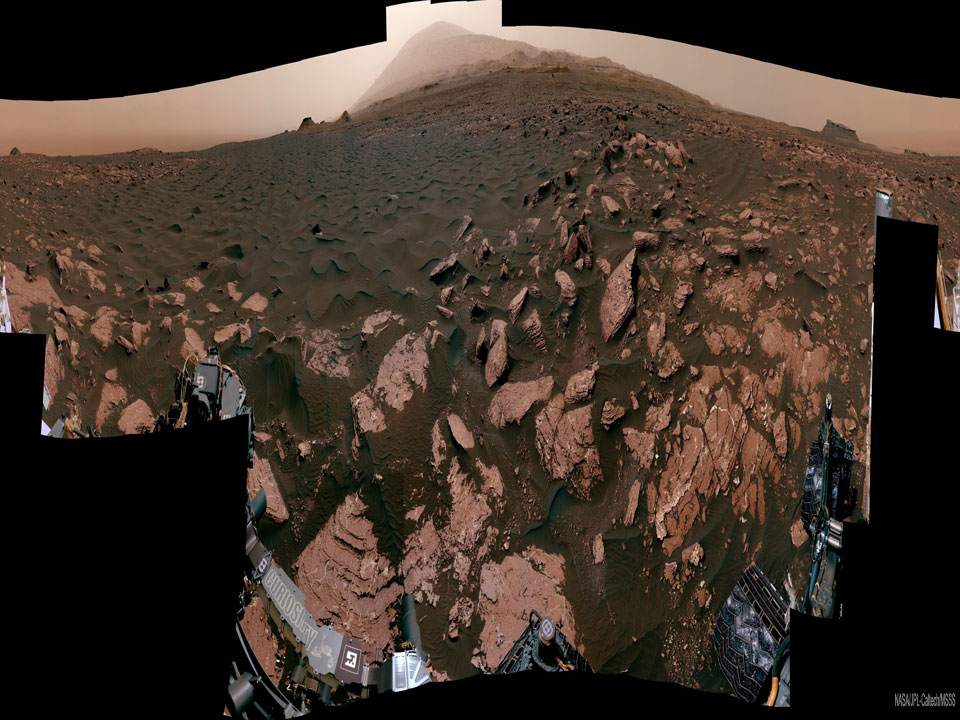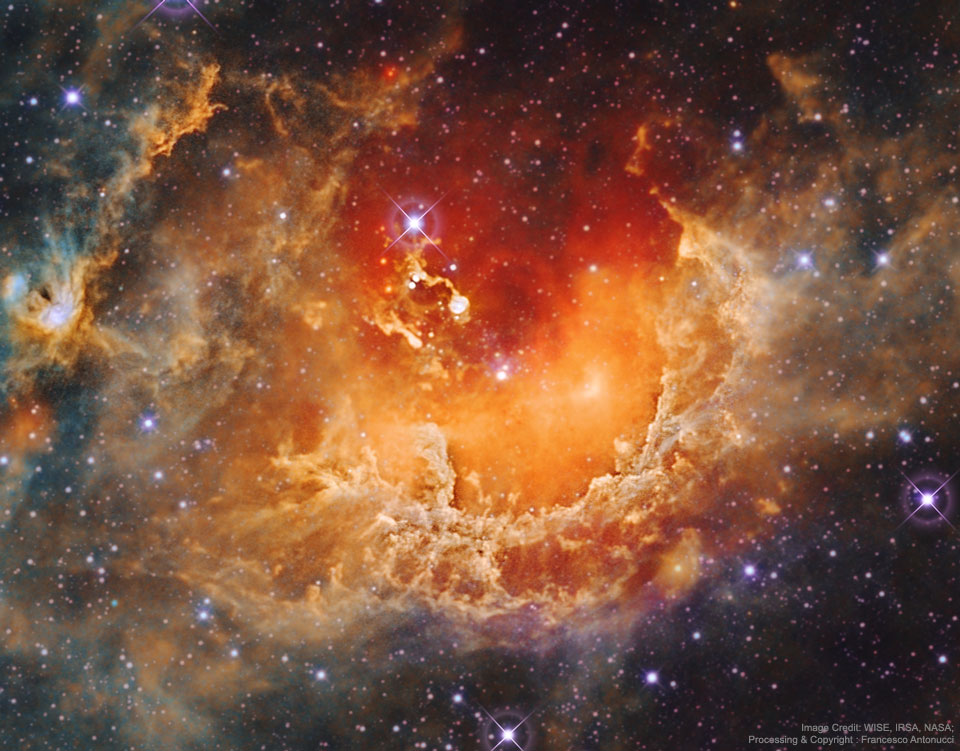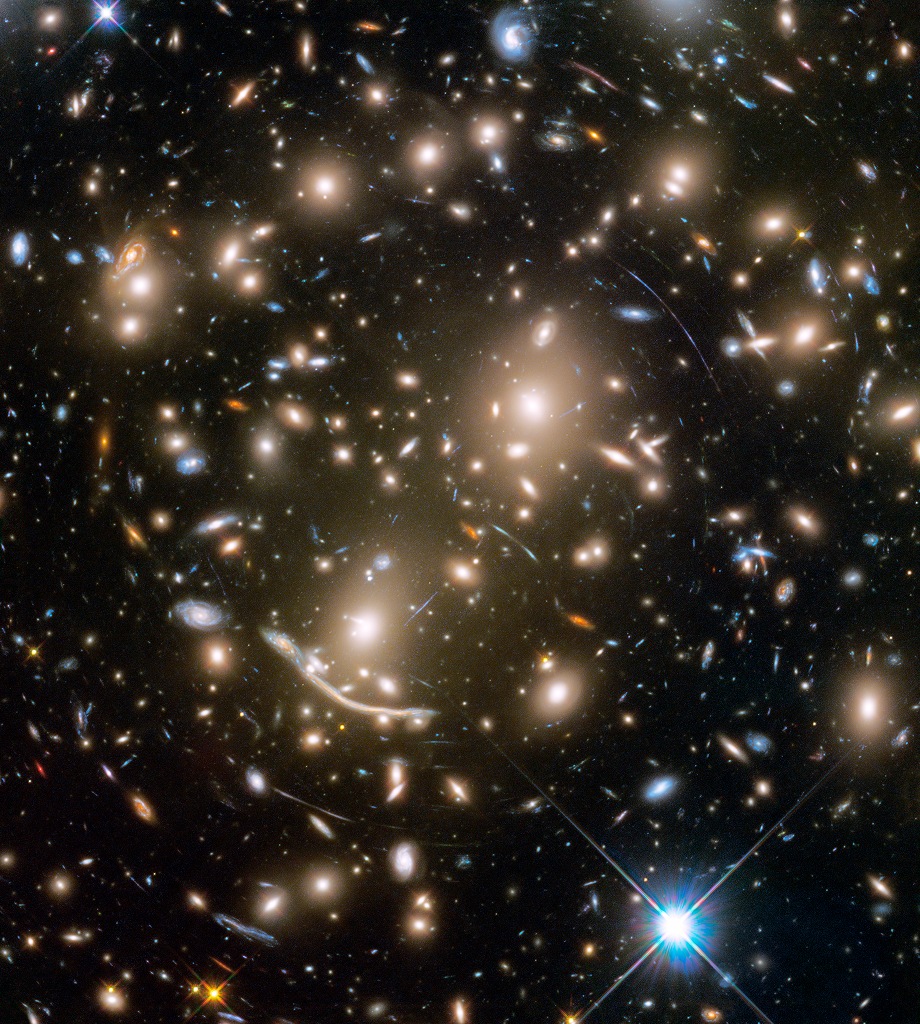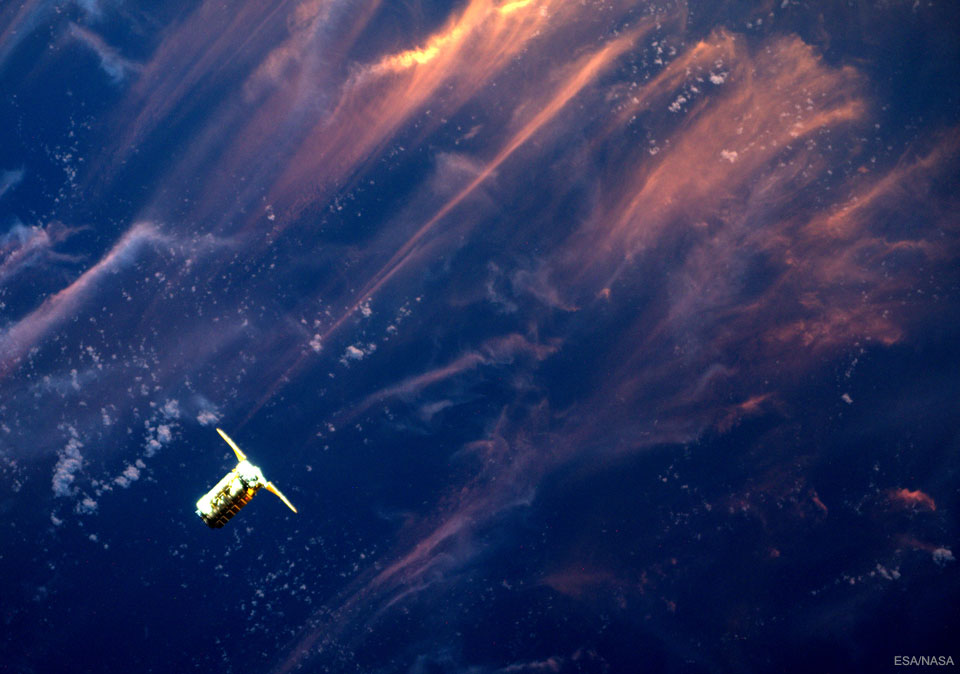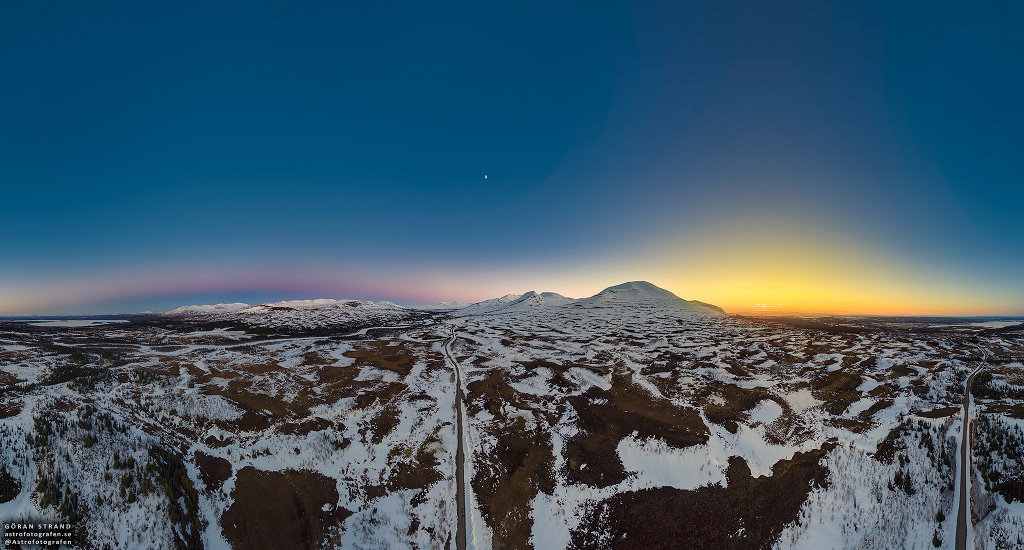
The road tracking through this stunning 360 degree view crosses a remote mountain area of Jämtland, Sweden, planet Earth. A 3x8 mosaic of still images, the panorama was taken on May 3rd from a small drone 200 meters above the ground. The scene records the warm light of the Sun setting in the northwest and the planet's dark shadow rising in the southeast. A small sun pillar gives away the Sun's position just below the horizon while the pinkish anti-twilight arch or belt of Venus outlines Earth's shadow. In the middle of the remarkably clear sky, the First Quarter Moon is visible above the mountains, its half illuminated disk separating sunset and shadowrise. A range of exposures were combined to cover the difference in sky brightness for sunset and Earth shadow. The tallest peak left of the sunset is Storsnasen, some 1400 meters above sea level. via NASA http://ift.tt/2smc7db
